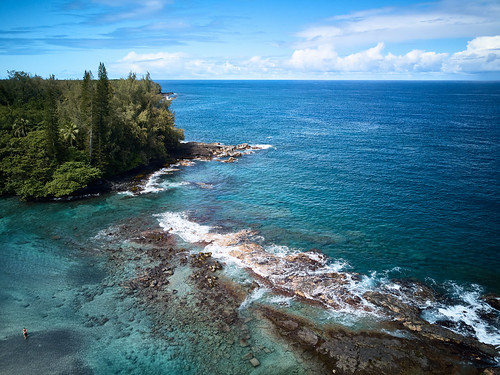Hawaii fires put scars on landscape
Hawaii #Hawaii

The fast-moving wildfires that raked Maui this week took a heavy toll on humans and property, killing dozens of people and devastating the historic town of Lahaina. But their effects on the landscape and environment in Hawaii are also expected to be significant.
Experts say the fires are likely to transform the landscape in unwanted ways including hastening erosion, sending sediment into waterways and degrading coral that is critically important to the islands, marine life and the humans who live nearby.
The wildfires struck Hawaii just as Jamison Gove, a Honolulu-based oceanographer with the National Oceanic and Atmospheric Administration, was publishing research in Nature on Hawaii coral reefs’ recovering from a 2015 marine heat wave. That work highlighted the threat to coral from land-based contaminants running off into the ocean.
Gove said Thursday that burning homes, commercial structures and cars and trucks would make any runoff worse by concentrating synthetic materials in the stream.
“It’s not a major leap to suggest when all that material is even more heavily concentrated in a small area, that the consequences would undoubtedly be more severe if and when it’s in the ocean,” Gove said. He noted that Lahaina’s coastal location meant “a minimal distance” for the materials to reach the ocean.
“Coral reefs provide coastal protection, they provide fisheries, they support cultural practices in Hawaii,” Gove said. “And the loss of reefs just has such detrimental consequences to the ecosystem.”
One casualty of the fire could be clean drinking water.
Andrew Whelton, a professor of civil engineering and environmental and ecological engineering at Purdue University, said the wildfires can contaminate private wells and water systems and even municipal water systems.
The private wells, which can be shallow and sometimes have little more protection than a board or well house, are easily overcome by fire and contaminated, Whelton said.
Municipal systems also can be affected when fire damages distribution systems. Whelton described a scenario in which pressure drops could lead to contaminated water backing up, sucking in smoke, soot, ash and vapors that penetrate plastics, gaskets and other materials to create a future problem.
“They leach out slowly into the clean water you’ve just put in, making that clean water unsafe,” Whelton said.
Elizabeth Pickett, co-executive director of the Hawaii Wildfire Management Organization, a nonprofit working with communities to prevent and mitigate fires, lamented the changes wrought by fire.
Invasive and fire-prone grass species have moved in over time and during a fire they can burn into native forests, which means the forests are replaced by more grass, Pickett said. The soil burns and sloughs off, leading to massive post-fire erosion that smothers coral, impacts fisheries and reduces the quality of the ocean water, she said.
The state is windy and the dust blows for years, harming human health, she added.
“When you lose your soil, it’s really hard to restore and replant. And then the only thing that can really handle living there in many cases are more of those invasive species,” Pickett said. “It’s systemic. Air, land and water are all impacted.”
Paul Steblein, the wildland fire science coordinator for the U.S. Geological Survey, said there are a number of fire-adapted invasive species. If that is what grows back following a wildfire, then fires can become more common.
Those invasive grasses are also growing faster during the periods that are wetter due to climate change and become easy to burn when they dry out, Steblein said.